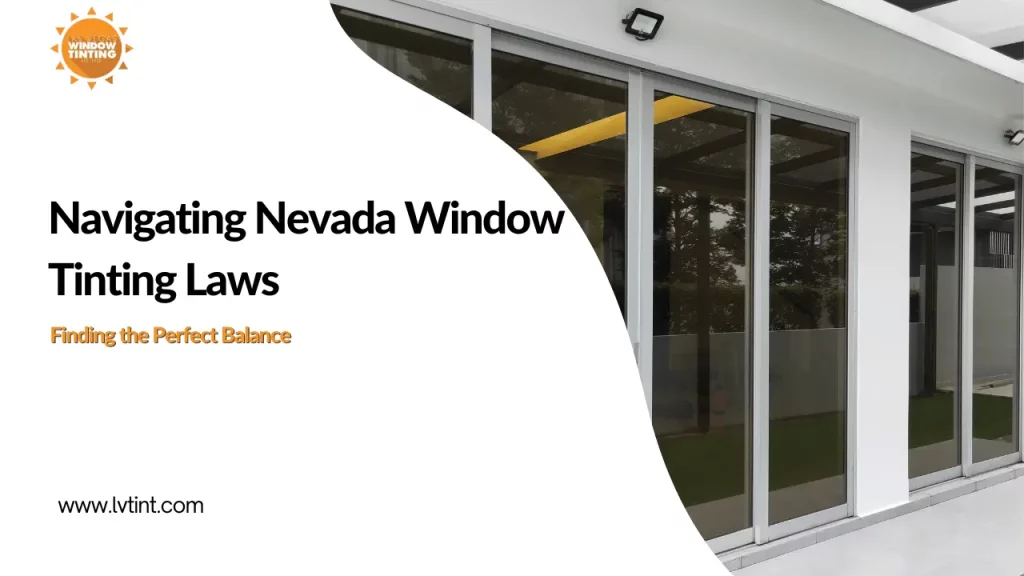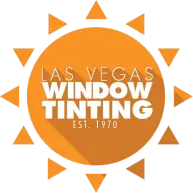
Nevada sunny skies beckon drivers to personalize their vehicles with window tint law. But before you embrace the sleek shade, understanding the state’s regulations is crucial. This guide uncovers the legal limits for cars and SUVs/vans, helping you achieve the perfect mix of style and safety.
Know Your Zones:
- Front Side Windows: The driver and passenger seats are your priority zones. Both cars and SUVs/vans can sport a maximum 35% Visible Light Transmission (VLT) tint. This means 35% of sunlight must penetrate, ensuring clear vision even under dim conditions.
- Windshield: A non-reflective tint graces the top part of your windshield (above the manufacturer’s AS-1 line, about 8 inches from the top). Full windshield tinting requires a doctor’s prescription for medical reasons.
- Back Side and Rear Windows: Unleash your inner designer! Both cars and SUVs/vans enjoy free rein when it comes to tinting these windows. However, maintaining some visibility enhances safety and communication with fellow drivers.
Key Takeaways:
- Front side windows: 35% VLT for both cars and SUVs/vans.
- Windshield: Non-reflective tint above AS-1 line, full tint with doctor’s note.
- Back side and rear windows: No restrictions on tint level.
Remember: Going beyond legal limits invites fines and compromises safety. Prioritize clear vision when choosing your tint level.
Beyond the Law: Why Tint Your Windows?
Window tinting is more than just a cool aesthetic; it’s a performance booster. Here’s why Nevada drivers adore it:
- Privacy: Keep prying eyes and valuables shielded.
- Climate Control: Block the scorching Nevada sun, lowering temperature, extending AC life, and saving fuel.
- Interior Protection: Say goodbye to UV rays! Tints block 99% of harmful UV rays, preventing fading, cracking, and sun damage.
- Resale Value: A well-maintained tint job preserves your car’s interior, potentially boosting its resale value.
Nevada Unique Advantages:
- Mirrored/Metallic Tint: Unlike most states, Nevada embraces the style and solar-rejection benefits of mirrored or metallic window tints.
- Color Freedom: Unleash your creativity! Any tint color is legal except red and amber. Go wild with silvers and golds!
- Flexible Testing: Nevada offers a generous 7% VLT variance tolerance. Even if your front windows test slightly darker than 35% (e.g., 28%), you might just get a warning.
Medical Exemptions and Resources:
Nevada recognizes the need for darker tints for certain medical conditions, like skin protection, eye sensitivity, or migraine management. Consult your doctor to explore this option.
Remember, staying informed keeps your street-legal and safe. If you have questions, reach out to the DMV or a reputable window tinting shop. They can guide you through the legal options and help you avoid costly tickets.
Now go forth and tint with confidence, Nevada driver!
Frequently Asked Questions
Not quite! Nevada prioritizes clear vision for safety. Front side windows (driver and passenger) can only be tinted to 35% Visible Light Transmission (VLT), meaning at least 35% of light must pass through for safe nighttime and low-light visibility. But, unleash your inner darkness on the back side and rear windows!
Look for a small etching or marking about 8 inches from the top of your windshield – that's the AS-1 line, the boundary for legal non-reflective tint. Can't find it? Your car manual or a window tinting pro can help.
Easy breezy! Nevada doesn't require official inspections. However, officers can pull you over if they suspect your tint is too dark. Play it safe and stay within the legal limits to avoid unnecessary stops.
Nevada loves sunroofs! You can tint them, but consider a lighter shade to maintain visibility and avoid blocking emergency signals.
While tinting itself usually doesn't affect your rate, some insurers might see heavily tinted windows as a modification and bump up your premiums. Best check with your provider to be sure.
